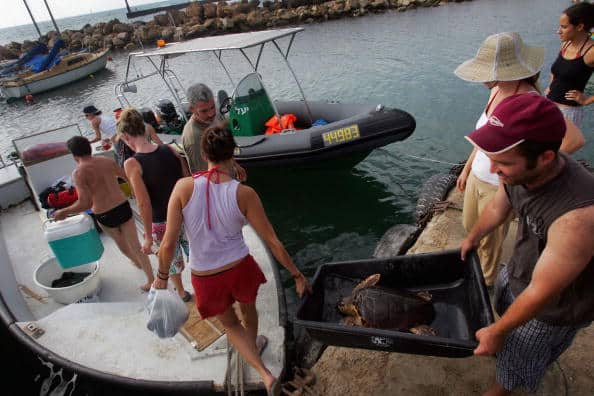The following blog entry is a cross-post from my blog Realizing Your Worth.
“We want a volunteer experience that can be done in no more than a day, and no less than a half-day.”
Companies want to engage their communities through employee volunteering programs. For most, this means calling a non-profit and scheduling an activity. But how should non-profits respond? Is there a “best” answer for everyone?
 Everybody wants to volunteer. And those who don’t….well, they’re bound to feel a little left out of conversation at the next cocktail party. Volunteering is the latest and greatest way to contribute to society. It’s trendy – and unlike skinny jeans, this trend is bound to last. (Don’t get me wrong, I like skinny jeans.)
Everybody wants to volunteer. And those who don’t….well, they’re bound to feel a little left out of conversation at the next cocktail party. Volunteering is the latest and greatest way to contribute to society. It’s trendy – and unlike skinny jeans, this trend is bound to last. (Don’t get me wrong, I like skinny jeans.)
As corporations jump on the volunteering band wagon, non-profits are frantically trying to manage the influx. Incidentally, they’re finding themselves a little (ok, a lot) frustrated. Corporations make a lot of sometimes unreasonable requests of non-profits when it comes to setting up the ideal volunteer experience for their employees. We’re about to begin a series examining the top seven (yes, seven) requests, and the Bad, Better, and Best way for Nonprofits to respond.
One thing to remember: while its good for you, the Nonprofit, to know what companies want, its equally important for you to know why they want it. Assessing “why” will guide you to a solution that’s better for you, your community, and their company.
The 7 Requests:
The Ideal Volunteer Experience….
- …can be undertaken in a day
- …can be done together as a team
- …has intrinsic value
- …does not clash with other objectives
- …enhances the skills of their employees
- …coincides with the company’s chosen cause
- …coincides with what their employees want to do
1. “We want a volunteer experience that can be done in no more than a day, and no less than a half-day.”
…WHY?
First things first: why does the company want this? Well, the answer is in the question; the experience cannot be too big, or too small. It must feel significant enough to draw people out of the office, and not so significant that they’re scared away.
Now, consider how these things effect you and your Nonprofit, and decide how to respond.
Bad, Better, and Best Responses:
BAD: Invent Work.
Ok so, if you happen to have stand-alone project, in dire need of completion, that would take about a day to finish, and provide a great photo-opp for a group of employees…. then, great. You’re good to go. Fulfill the request. If not, remember that your time and resources are limited. Unless there is an obvious and significant payoff for your provision of this opportunity, you probably want to pass. Whatever you do, do not invent work. Got that? Do not have them repaint the same wall that was painted last week. Inventing work is bad for your non-profit organization.
Inventing work is equally bad for the corporation. Community engagement has become an essential strategy for business. Checking a one-time activity off the “social responsibility” list does not qualify. Hold yourself and the business to a higher standard. If they are asking to volunteer with you out of a genuine effort to become socially responsible, help them do it. Sure, the customer is always right, but it’s your job to help them ask better questions – and be more right. Inventing work is bad for the corporation.
Inventing work is bad for your community. When a corporation volunteers with your non-profit, they are bringing a potential wealth of skills, resources and networks. To access these resources, you must draw the business into more than a “quick and easy” arrangement. Inventing work may be the simplest answer, but ultimately, by offering a one-time, “repaint the wall” experience, you could be stealing value yet to be realized in connecting with that business. See what I mean? Bad for the community.
BETTER: Propose a partnership.
 Alright, after you figure out “why” the company wants what they want, and after you decide not to invent work, let’s consider a better response: Partnership.
Alright, after you figure out “why” the company wants what they want, and after you decide not to invent work, let’s consider a better response: Partnership.
It’s really not so complicated. When the CSR guy calls from the corporation, ask about the company’s goals. Like this; “Is this volunteer activity part of a grander scheme or bigger goal you have for the company?” And when you’ve got him listening, let him in on some of your goals. For example, if your NPO was hoping to build a playground for a local school in the next year, explain that you could use a group twice a month over the next 6 months to help with the manual labor. Draw the company into a conversation of mutual benefit. You’ll know within minutes whether or not this corporation is one you want to work with.
Designing the partnership will take deliberate effort to ensure everyone gets what they need without giving up any non-negotiables. Social partnerships are like any other partnership and require some level of commitment in order to thrive. At some point, this will mean institutionalizing certain aspects, but don’t worry – keep it simple and take it slow. The rest will come organically.
A partnership is better for you, and it’s also better for your community, and better for the business. It offers the offers the business a genuine CSR strategy toward becoming socially responsible, and offers the community the potential benefit of the resources the business brings. Propose a partnership: its a better response for everyone. (For good resources on Social Partnerships check out our Facebook Page).
BEST: Have your cake and eat it too
 The problem with “proposing a partnership” is fairly obvious – it’s not realistic to partner with every business who calls. You would overwhelm yourself trying to coordinate that many efforts. Believe me, one, two, maybe three partnerships are enough.
The problem with “proposing a partnership” is fairly obvious – it’s not realistic to partner with every business who calls. You would overwhelm yourself trying to coordinate that many efforts. Believe me, one, two, maybe three partnerships are enough.
So, if you’re not inventing work, and you’re already partnering with a corporation, what do you do with the rest of the requests for volunteer opportunities? Well, you make it easy, of course. Have your cake and eat it too.
All you need is an ongoing, open volunteer opportunity. This is a space where all types of volunteers can show up on a regular basis (preferably weekly) and involve themselves to any degree they want. The activity provided should be one that can be accomplished with 3 volunteers, or 53. The point is, volunteers see your organization for the first time, and you see them. There is no pressure, no obligation, no disappointment. Volunteers who aren’t worth your effort, weed themselves out. Volunteers who will benefit your organization, stick around. This is the volunteer’s “first stage” – and its important to meet them where they’re at.
If you’re a community kitchen, the activity can involve serving meals. If you work with nature, you can plant trees. If you’re an organization that feels you can’t accommodate this kind of space, trust me: There’s a “first stage” space for everyone. Sometimes it takes some work to get there, but its worth it in the end.
With an ongoing, open volunteer opportunity, you’ll have a great answer for every business who calls. You’ll meet the company where they’re at – really, all they want is to try it out. At the same time, you’ll offer them a chance to develop a partnership that will effectively move them toward their CSR goals, while opening the door for your non-profit to their resources. It’s mutually beneficial and, once the space is set up, the process is more than easy – it’s virtually automatic. To read more about the benefits of a fully automated volunteer process, read this series: How to Offer a Great Volunteer Experience.
“We want a volunteer experience that can be done in no more than a day, and no less than a half-day.”
When a business asks for a volunteer opportunity that can be accomplished in a day, it’s bad to invent work. It’s better to propose a partnership. And it’s best to have your cake and eat it too by offering an open, ongoing opportunity. If the “best” response sounds like too much work, don’t give up yet. It’s cake. Just check out this series for a few hints: 3 Reasons Why You’re Finding It Hard to Find and Keep Volunteers
Next time: “We want a volunteer experience that can be accomplished as a team” and how to respond.
Chris Jarvis
Senior Consultant, Realized Worth, Toronto, Canada 416-567-2004
Email me; ch*********@re***********.com
Join our Facebook Page
Follow me on Twitter @RealizedWorth
Check out My LinkedIn Profile










